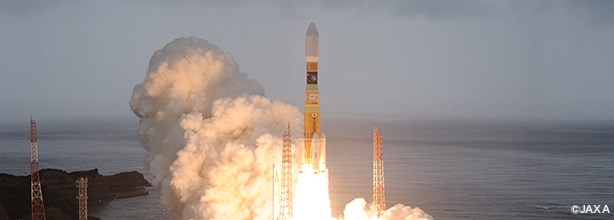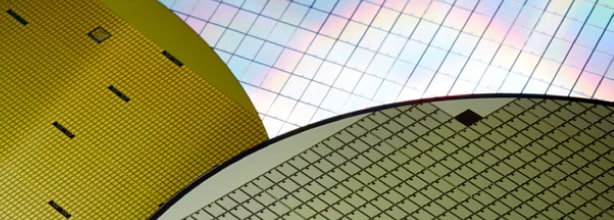
- Semiconductor Technology Now
Cross Talk
The future of black hole research
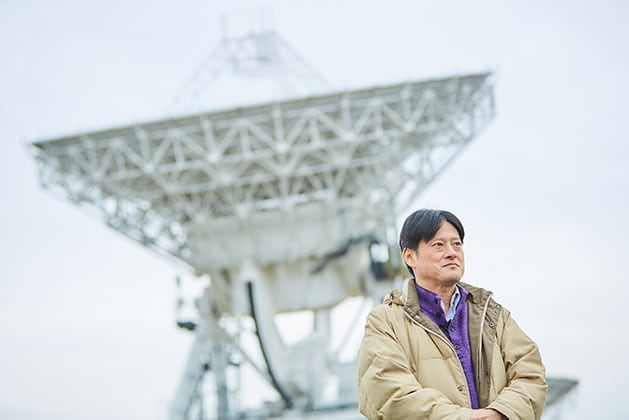 |
Mie Nagata: Apart from the supermassive black hole at the center of galaxy M87 that you have announced this time, have you captured an images of any other black holes?
Mareki Honma: Some EHT observations come from a radio telescope at the South Pole (figure 6). Now, it was not used this time because the supermassive black hole at the center of galaxy M87 is not visible from the South Pole. However, there is another astronomical object called Sagittarius A**4 that we have targeted because we believe there is a black hole at the center of the Milky Way galaxy. Looking from the South Pole, Sagittarius never dips below the horizon and because it is always visible from there, the South Pole radio telescope was important for observing Sagittarius A*.
We already obtained data from Sagittarius A* in 2017, and we are currently in the analysis stage, so I think we will be able to release images in 2020. I think you will be impressed.
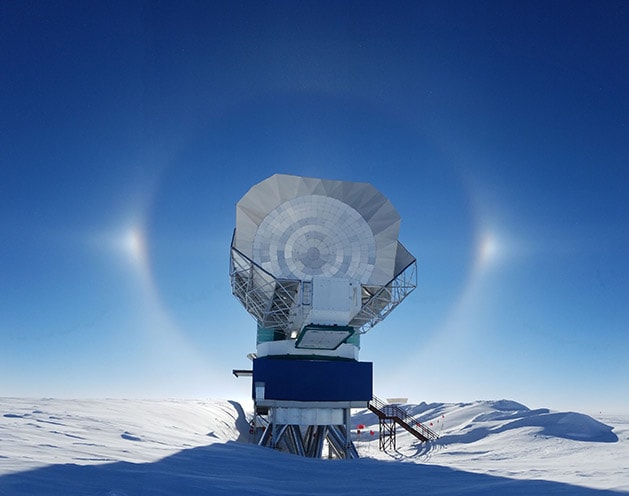 |
Mie Nagata: Have you already decided what you will observe next?
Mareki Honma: Next is video. This time, we captured a still image, but next time we want to take more detailed observations to capture video movement of phenomena around the black hole. It certainly won’t be easy, but we should be able to see movement if we increase the number of telescopes we use. In 2020, the EHT project will add three telescopes to the collaboration to increase the amount of data we can obtain. I think we should be able to capture movement over the coming five years or so.
And the relationship between large black holes and galaxies...
Mie Nagata: Do black holes come in different sizes?
Mareki Honma: They are created in different ways. Small black holes are what’s left after a star of about 30 times the mass of our sun burns out. We understand how they form, and that there are many of this type within galaxies. Supermassive black holes like the one we imaged, on the other hand, have enormous mass of at least one million times the mass of our sun or, in the case of the M87 black hole, about 6.5 billion times the mass of our sun. Also, there is only one supermassive black hole right in the middle of every galaxy, including our Milky Way system.
Supermassive black holes must play some role in the creation of galaxies, but we don’t know what that role is. Whether the supermassive black hole existed before the galaxy, or the galaxy before the black hole, is just like the riddle of the chicken and the egg. Nevertheless, we are certain that supermassive black holes do play an important role for galaxies. Finding out the answer to this question will be a major focus of research for astronomy over the coming 10 years.
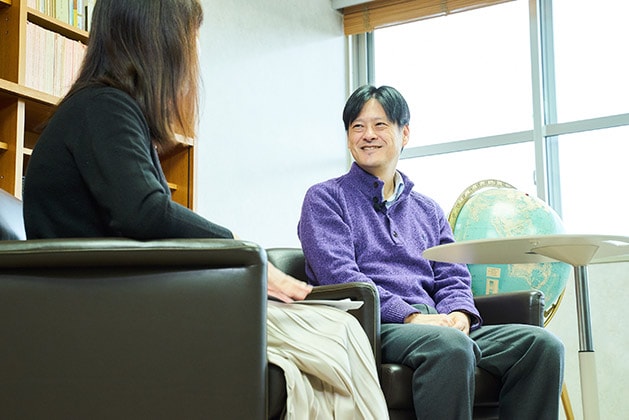 |
Mie Nagata: When matter is sucked into a black hole, other matter is jetted out*5 in a constant direction at the same time. One theory suggests that this phenomenon results in the creation of galaxies.
Mareki Honma: Yes, that is one theory. It suggests that the jets coming off black holes contain a mix of various matter that is blown to every corner of the galaxy where it forms stars and other objects. Another theory suggests that the jets collide with gases to form new stars. These theories are extremely interesting, because they point to black holes as being the reason for our birth and for our very existence. It is certainly possible, so I hope that future research can clarify this question.
Mie Nagata: Are there any clues to help us resolve these questions you have been talking about, such as the relationship between supermassive black holes and galaxies, or what the jets mean?
Mareki Honma: If we could see the distant galaxies at the end of the universe, and understand what is going on at their centers, then we might have our answers. This is why we need radio telescopes with even better vision than at present, but they would need an extraordinary level of performance that at the present level of technology is still just a dream.
But just like the telecommunications and semiconductor technologies that we spoke about, the speed of progress and prospects for science and technology are immeasurable. I think that someday, mankind will succeed in creating the type of telescope I am talking about.


Footnotes
- *4
- Sagittarius A*: This astronomical object at the center of our own Milky Way galaxy is believed to be a supermassive black hole. With a possible mass of about four million times the mass of our sun, and located about 25,000 light-years away from Earth, it is our closest supermassive black hole. This gives it the greatest apparent diameter of all astronomical objects with the potential to be black holes, so there are high expectations that the EHT will be able to capture an image of its shadow. For this reason, along with M87, it has been the most important target for EHT observations.
- *5
- Black hole jets: While the enormous gravity of black holes suck in surrounding matter, some of the matter in the accretion disk surrounding these astronomical objects is throttled and jetted out in one or two directions at up to 99% of the speed of light. How these jets are driven, and how they are illuminated by the black holes is one of the greatest puzzles of astrophysics.
Profile

Mareki Honma
Director, Mizusawa VLBI Observatory, National Astronomical Observatory of Japan (NAOJ)
Professor, National Astronomical Observatory of Japan
Professor, Graduate University for Advanced Studies
Professor, Graduate School, The University of Tokyo
Born in Texas, U.S.A., Mareki Honma was raised in Kanagawa Prefecture, Japan. He graduated from the Department of Astronomy, the University of Tokyo in 1994, and completed his doctoral course at the Graduate School of the same university in 1999. Also in 1999, he became COE Researcher at the National Astronomical Observatory of Japan (NAOJ).
After working as assistant and then associate professor, Honma has held his current position since 2015. His area of expertise is radio astronomy, and his main areas of research are galactic structures and black holes using very long baseline interferometers (VLBI). He has authored a number of publications including Kyodai Burakku Horu no Nazo [The Mystery of Supermassive Black Holes], Kodansha Blue Backs series, and Kokuritsu Tenmondai Kyoju ga Oshieru Burakku Horu-tte Sugoi Yatsu [The Wonders of Black Holes as Taught by a Professor of the National Astronomical Observatory of Japan], Fuso Publishing. Since 2017, he has appeared on the NHK Radio program Kodomo Kagaku Denwa Sodan [Science Hotline for Children] to answer questions.
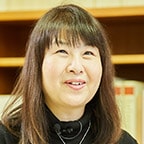
Mie Nagata
Astronomy presenter, Natsuyasumi Kodomo Kagaku Denwa Sodan [Science Hotline for Children: Summer Edition], NHK Radio
Mie Nagata writes a column for the Tokyo Shimbun newspaper called Hoshi no Monogatari [The Story of Stars]. Her main publications include Seiza no Mitsukekata to Shinwa ga Wakaru Hoshizora Zukan [Finding Constellations and Understanding Myths: An Illustrated Encyclopedia of Stars in the Sky], Seibido Shuppan; Tokimeku Hoshizora Zukan [An Exciting Illustrated Encyclopedia of the Stars in the Sky], Yama-kei Publishers; Hoshi to Uchu no Fushigi 109 [109 Mysteries of the Stars and Space], Kaisei-Sha; Hajimeyo Hoshizora Kansatsu [Observations of Stars in the Sky for Beginners], NHK Publishing; and Sora Garu Baiburu [Girl’s Bible of the Sky], Futabasha Publishers. She has also written about stars in the sky for a series of postage stamps showing constellations.
She has an asteroid named after her: 11528 Mie.
Every day, she is busy explaining the wonders of the universe and earth.
Writer
Shinya Torishima
Space development commentator<>
Member of Space Authors Club
Shinya Torishima conducts interviews and writes news articles and discussion papers on Japanese and international space development. He has also made many appearances in newspapers, television and radio to talk about various topics. His main publications include his co-authored Elon Musk, Yosensha, and articles for academic journals.
Writer’s website: http://kosmograd.info/
Twitter: @Kosmograd_Info













